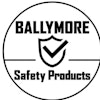M A R K E T M O N I T O R R E S E A R C H S E R I E S
1
Survey respondents weigh in on challenges, strategies, and
plans for investment as customer expectations continue to grow.
The State of B2B e-Commerce
in Industrial Distribution
PRESENTED BY:
SPONSORED BY:
M A R K E T M O N I T O R R E S E A R C H S E R I E S
2
Table of Contents
Introduction ........................................................................................................ 3
Who’s Embracing e-Commerce? Today’s Adoption .......................................... 4
Challenges .......................................................................................................... 5
Finding Solutions ................................................................................................ 8
M A R K E T M O N I T O R R E S E A R C H S E R I E S
3
According to Forrester Research, B2B e-commerce in the U.S. this year will total $780 billion – or 9.3% of the total
market. Forrester forecasts that B2B e-commerce will exceed $1.1 trillion and comprise 12% of all B2B sales in the
United States by 2020. The firm also predicts a compound annual growth rate of 7.7% in B2B e-commerce over the
next five years, resulting from the need by B2B companies to reduce their costs.
Globally, the growth rate is even greater. Internet Retailer reported that the global B2B e-commerce segment would
grow 25% this year (citing a study by eMarketer).
It’s evident that there are already some clear winners in the industrial distribution segment, as several large
companies exhibit leadership in the online space. Grainger, for example, boasts 40% of its sales through
e-commerce. MSC Industrial online sales accounted for over half of its total sales in both Q1 and Q2 of this year.
Yet, distribution’s mixed bag means there is a huge variance between some of these businesses deeply entrenched in
digital, and those who aren’t. In a 2013 audit of motors and power transmission products distributors, hybris – an SAP
company – analyzed 52 B2B websites to benchmark their e-commerce capabilities. Findings show that fewer than
10% of the websites analyzed had high e-commerce functionality – defined as comprehensive search and navigation,
the ability for customers to easily track orders and generate invoices, check out safely and efficiently, and rich product
descriptions and specifications. This suggests a major gap between what buyers want, versus what many industrial
distributors are offering. To put it into perspective – a 2014 Forrester Consulting study suggests that 52% of business
buyers expect at least half of their purchases to be made online in three years’ time.
Introduction
M A R K E T M O N I T O R R E S E A R C H S E R I E S
4
In a recent survey of our readership, we aimed to uncover the rates of e-commerce adoption amongst Industrial Distribution
subscribers, as well as their related challenges, strategies, and investment plans.
Two-thirds of our survey respondents say they offer some sort of e-commerce capability for their customers, but it appears the
percentage of sales derived from the web is still quite small. The most popular response as far as volume goes was 0 to 5% of
sales, cited by 44% (Figure 1). In fact, the Graingers and MSCs – as we know – are in the minority, with 11% of our respondents
saying that 40+% of their revenue was web-generated. This is despite fairly equal representation from companies under $10
million in annual revenue, and those above $500 million. Perhaps the ramp-up is slow for many, but we still see a huge shift from
where the industry was just a decade and a half ago. In 2000, we reported in our Survey of Distributor Operations that just 17% of
industrial distributors represented said they derived any revenue from online channels.
Optimism amongst our e-commerce-friendly respondents is high as well. Ninety-nine percent anticipate their web sales will
increase over the next 12 months; the most popular response (from 38%) anticipated sales increasing by 6 to 10%. A highly
bullish 11% of respondents envision a 30+% increase in web sales.
Regardless of what appears to be a slow moving process for many, there is much consensus from distributors who see improving
e-commerce sales as a priority in terms of overall business development. Specifically, nearly three of four consider it to be “very
important.”
Who’s Embracing e-Commerce? Today’s Adoption
What percentage of
your overall revenue
is web-generated?
44.1%
28.8%
6.8%
9.3% 0-5%
6-15%
16-25%
26-40%
More than 40%
11.0%
Figure 1:
M A R K E T M O N I T O R R E S E A R C H S E R I E S
5
Though many profess the importance of a quality e-commerce presence, it’s often a bumpy road for distributors – both those just
starting out, and those looking to enhance an existing platform. That’s because the needs of buyers are constantly evolving and,
with them, the expectations for a consumer-grade customer experience.
Technical Capabilities
Likewise, as mobility plays a greater role in the online procurement challenge, it’s not enough to just offer one format for users.
In terms of where our readers sit on the mobility front, 57% of those doing online business said they do not offer a mobile app
featuring e-commerce functionality. In a recent presentation, eMarketer claimed that there are more than 166 million “mobile
shoppers” in the U.S. While there was no data specific to B2B, it’s no secret that consumer purchasing trends have become
business purchasing trends in short order – a phenomenon we’ve seen with e-commerce and customer experience in general.
For our audience, three major challenges for managing e-commerce stood out in the survey results (Figure 2):
• Making the website user-friendly (24%).
• Aesthetic issues like product descriptions, product images, graphics, logos (22%).
• Keeping pace with, or staying ahead of, the competition (19%).
Challenges
Figure 2:
Aesthetic issues (product descriptions, product images, graphics, logos) 22.1%
Cost 7.1%
Keeping pace with or staying ahead of competitors 18.6%
Legacy issues (ongoing adaptation from brick-and-mortar to online)9.7%
Making website user-friendly 23.9%
Payment process 4.4%
Technical issues 10.6%
Other 3.5%
What is the most difficult part about managing your business’ e-commerce?
M A R K E T M O N I T O R R E S E A R C H S E R I E S
6
Arguably, “aesthetic issues” could be merged with the category of “technical issues,” cited by an additional 11% of
survey respondents. In fact, 26% of those companies who don’t offer e-commerce said that it is a result of “technical
obstacles.”
But for those who currently play in e-commerce, technical capabilities
seem to provide a foundation for many home grown platforms: More than
two-thirds of our survey respondents say they’ve built their own e-com-
merce system. Chris Fletcher, research director for Gartner, wrote a blog
on this very topic titled “Build vs Buy in E-Commerce: Is it a lobster trap?”
where he suggests building a home-grown system is a bit like a lobster
trap; once you’re in, it’s difficult to get out. While there are some reasons
for building a proprietary system, he cautions that companies who struggle
to keep pace with innovation (things like mobile support, for example) or
those who lack the internal technical and management resources required
to build, deploy, and support an e-commerce system, may be better off
using a licensed or SaaS alternative.
Based on this next statistic, it’s possible that some businesses have technical expertise that does not quite hit on all cylinders.
Fewer than a third of those offering e-commerce said the functionality of their sites is “very good” or “excellent.” More, instead,
rated their sites “fair” or “poor,” indicating that – whether bought or built – many sites leave something to be desired from a customer
experience standpoint.
Competition
Unfortunately, customer experience is the name of the game, as strong players with cutting edge capabilities – including the likes of
Amazon – up the ante for users desiring a seamless, intuitive experience like they are used to on the consumer side.
A recent study by logistics provider UPS suggests that customer experience may be a primary driver of customer satisfaction levels,
and customer loyalty to long-standing distributor relationships might actually be trumped by ease and accessibility of e-commerce
offerings. One of the most compelling finds from the UPS report was on the concept of loyalty, and how conflicted today’s buyer
might actually be. Specifically, 38% of respondents said they’d already gone outside of their normal supply base to buy online from
someone for the first time.
Customer experience may be
a primary driver of customer
satisfaction levels, and customer
loyalty to long-standing distributor
relationships might actually be
trumped by ease and accessibility
of e-commerce offerings.
▲
KEY
POINT
M A R K E T M O N I T O R R E S E A R C H S E R I E S
7
In the context of this figure, it’s interesting that our readership survey suggested that, for 35% of those who don’t engage in online
sales, it’s because of a lack of demand (Figure 3). This theory stands in contrast to conventional wisdom, and the statistics around
the growth of digital purchasing.
Looking back on this data, those citing a demand issue were overwhelmingly represented by smaller distributors, with half of the
group in the category of $10 million or less in annual revenue, and 82% below $50 million. Perhaps the regional nature of these
smaller companies suggests that they feel their business functions best on a local level. Some may not be interested in, or scalable
enough for expanding their reach further.
Yet new data from real estate firm CBRE Inc. shows that demand for industrial facilities under 200,000 square feet in urban areas
is on the rise, likely due to e-commerce and the emerging requirements of end users growing more reliant on 1-2 day deliveries.
It’s possible that e-commerce might be a driver behind strategic acquisitions based on geography and these smaller companies
could become attractive to larger buyers with an e-commerce presence. It might be the only way many of these distributors will find
themselves online, as a full two-thirds of those who don’t offer e-commerce now say they have no plans to implement it in the next
two years.
What is the primary
reason that your business
does not engage in online
sales?
Cost
Lack of demand
Lack of marketing/promotional resources
Technical obstacles
Other
Figure 3:
6.5%
35.5%
9.7%
25.8%
22.6%
M A R K E T M O N I T O R R E S E A R C H S E R I E S
8
Unfortunately for those in the industry who aren’t yet ready to commit to an e-commerce initiative, the consensus is that the
growth of digital procurement is likely to explode. In 2014, Forbes predicted that the global B2B e-commerce market will be
worth $6.7 trillion by 2020. If accurate, this trend will make the B2B e-commerce market two times bigger than the B2C market
($3.2 trillion) within that timeframe.
Eighty percent of those who currently offer e-commerce say they plan a site upgrade of some kind within the next two years, but
nearly half of those cite technology/functionality issues as the biggest concern as they go forward (Figure 4). Forty-five percent
also worry they will struggle to match their customers’ needs. Luckily for distributors, there is more than one way to skin this cat,
and there are numerous resources available to help.
Vendors of e-commerce systems increasingly work to take complexity out of their offerings, especially as they cater to smaller and
medium-sized companies that may not have the in-house technical expertise to support these projects. Cloud platforms might
serve as an additional carrot for companies who wish to avoid the expense of on-premise IT infrastructure. “In order to adapt to
change, distributors need flexible, unified systems that can easily scale up (and down, if needed) and are highly modular,” said
Ranga Bodla of Netsuite, in an article for ID earlier this year. Additionally, solutions around product content can streamline what
was once a messy process for businesses contending with a high SKU count.
Finding Solutions
Figure 4:
Cost 27.8%
Matching customer needs 45.4%
Mobile app compatibility 16.5%
Payment process 4.1%
Technology/Functionality Issues 46.4%
Website design 25.8%
Website security 15.5%
Other 5.2%
What are your two biggest concerns for enhancing your e-commerce platform?
M A R K E T M O N I T O R R E S E A R C H S E R I E S
9
Additionally, Amazon Business’ or Alibaba’s e-marketplace model may also offer distributors an opportunity to take
advantage of a third party’s technology platform, logistics capabilities, and mature marketplace of customers. And
for many distributors, using an e-marketplace would serve not as a replacement to e-commerce, but as a supple-
ment to it – providing another channel to reach new or existing customers digitally.
Buying groups are even getting in the game, as they work to help independent
member companies compete in a digital world. Affiliated Distributors (AD),
the $31 billion contractor and industrial products wholesale buying/market-
ing group, recently announced its AD eContent Service program – an effort,
the group says, to level the playing field on the web. The program includes a
comprehensive content management solution which offers a shared Master
eCatalog and Web Portal, along with member Specific Sub-Catalog and Store
Front options.
Regardless of the avenue, distributors would be wise to consider getting in the
game, if they haven’t taken steps to do so already. Some of our survey respon-
dents explained why they don’t employ e-commerce tactics, with reasons like
they “prefer to do direct business” or that their sales “must involve personal
touch” – valid desires, but ones linked to a fading business model for many,
both now and as this push towards online purchasing begins to accelerate. So, as you ask yourself where you stand on this digital
divide, a more important question might be: where do your customers find themselves? Are they firmly implanted in catalog culture,
teetering on the edge, or jumping full force into e-commerce?
Eighty percent of those who
currently offer e-commerce
say they plan a site upgrade
of some kind within the next
two years, but half of those
cite technology/functionality
issues as the biggest concern
as they go forward.
▲
KEY
POINT
M A R K E T M O N I T O R R E S E A R C H S E R I E S
10
Market Monitor Research Series:
Advantage Business Media’s Market Monitor Research Series presents fresh research and analysis on compelling and timely
industry topics. “The State of B2B e-Commerce in Industrial Distribution” was prepared by Industrial Distribution Executive Editor
Anna Wells. The data presented in this report is based on the results of a survey of Industrial Distribution subscribers.
About the Author:
Anna Wells is Executive Editor for Industrial Distribution. With a background in technical writing for the industrial market, Wells
also oversees IMPO (Industrial Maintenance & Plant Operation) and Manufacturing Business Technology – two of Advantage
Business Medias strong manufacturing brands. In addition to coordinating the development of content for all three properties,
Wells holds a B.A. in English-Literature from UW-Madison, and joined the company in 2006.
About Industrial Distribution:
The Industrial Distribution audience is comprised of 30,000 distribution industry professionals working in the industrial space –
primarily C-level executives and sales and sales management. The responses contained in this report were the result of an email
survey sent out to the Industrial Distribution readership in July 2015.
About Advantage Business Media:
Advantage Business Media (www.advantagemedia.com) is a data-driven marketing solutions company leveraging content,
technology, and business intelligence to match its audience’s job performance needs with its clients’ solutions. With a diversified
portfolio of highly focused websites, e-newsletters, print publications, specialized directories, vertical search databases,
conferences, ancillary media vehicles, and associated web-based services, Advantage serves more than one million industry
professionals in the manufacturing, science, and design engineering markets. For more information visit www.advantagemedia.com.
© Copyright 2015, Advantage Business Media. All rights reserved.
The State of B2B e-Commerce in Industrial Distribution
Though many profess the importance of a quality e-commerce presence, it’s often a bumpy road for distributors – both those just starting out, and those looking to enhance an existing platform. That’s because the needs of buyers are constantly evolving and, with them, the expectations for a consumer-grade customer experience.
Latest in Home
Packer Fastener Expands to Kansas City
April 18, 2024
Fromm Announces New Services Division
April 18, 2024
Ballymore Safety Sold to PE Firm One Equity Partners
April 17, 2024






















